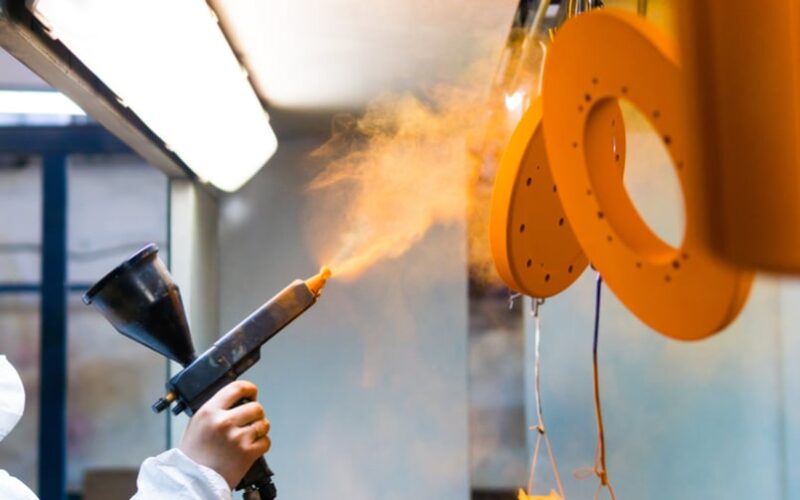Powder coating is a popular technique to protect metal parts from corrosion and wear. It involves applying a layer of powdered resin to the metal and heating it to form a smooth and durable coating. While it may seem simple, many common mistakes can be made during the powder coating process, resulting in subpar results or damage to the metal parts. This article will explore some of the most common mistakes to avoid when powder coating your metal parts.
Choosing the Wrong Powder Coat Colors
One of the most common mistakes when powder coating metal parts is choosing the wrong color. Many different powder coat colors are available, from basic black and white to vibrant blues, greens, and reds. It’s important to choose a color that not only looks great but also provides the necessary protection for your metal part. For example, if you are coating a metal part exposed to harsh weather conditions, a darker color may be more appropriate as it will absorb more heat and provide better protection against the elements.
Additionally, if you are looking for a specific finish, such as a chrome powder coat, choose a powder specifically designed for that finish. Using the wrong powder can result in a dull or inconsistent finish that doesn’t look as intended.
Not Properly Preparing the Metal Surface
Properly preparing the metal surface before powder coating is crucial to ensuring a smooth and durable finish. Failure to do so can result in a coating that is uneven or prone to chipping or peeling.
The first step in preparing the metal surface is to clean it thoroughly. Any dirt, oil, or other contaminants on the surface can interfere with the adhesion of the powder coat, so it’s important to use a degreaser or solvent to remove any traces of these substances. Next, the metal should be sanded or blasted to remove rust or corrosion and create a clean, rough surface to which the powder can adhere.
Skipping the Priming Process
Priming the metal before powder coating is an essential step that is often overlooked. Priming helps to create a smoother and more even surface for the powder coat to adhere to, resulting in a more durable finish. It also helps to prevent rust and corrosion from forming under the powder coat.
Various primers are available for powder coating, including epoxy and zinc-rich primers. The type of primer you choose will depend on the type of metal you are coating and the conditions it will be exposed to. Be sure to choose a primer specifically designed for powder coating use.
Applying Too Much or Too Little Powder
The amount of powder that should be applied to a metal part depends on the size and shape of the part, as well as the desired thickness of the coating. Applying too much powder can result in a thick, uneven coating that may not adhere properly or may peel or crack over time. Applying too little powder can produce a too-thin coating to provide adequate protection.
To ensure that the right amount of powder is applied, following the manufacturer’s guidelines for the specific powder you are using is important. This will include information on the recommended thickness of the coating and the amount of powder that should be used per square foot of surface area.
Not Properly Curing the Powder Coat
Curing the powder coat is the final step in the powder coating process and is essential to ensuring a durable and long-lasting finish. The curing process involves heating the coated metal part to a specific temperature. This causes the powder to melt and flow together, forming a smooth and even surface.
Not properly curing the powder coat can result in a coating that is soft or prone to chipping or peeling. It’s important to follow the manufacturer’s guidelines for the specific powder you use when curing time and temperature. Failure to do so can result in a coating that doesn’t fully cure, leading to the coating breaking down and deteriorating over time.
Not Protecting Against Overspray
During the powder coating process, overspray can occur when excess powder particles are released into the air and land on nearby surfaces. This can result in a messy work environment and damage nearby equipment or surfaces.
To prevent overspray, it’s important to properly mask and cover any nearby surfaces or equipment that could be affected. This includes using masking tape and paper to cover areas that should not be coated and using a spray booth or other containment system to capture any excess powder particles.
Not Checking for Electrical Grounding
Electrical grounding ensures the powder coat adheres properly and evenly to the metal part. If the metal part is not properly grounded, the electrostatic charge that attracts the powder particles can become disrupted, resulting in an uneven or patchy coating.
To ensure proper grounding, the metal part should be connected to a grounding rod or other electrical ground. It’s also important to periodically check the grounding throughout the powder coating process to ensure consistency.
Conclusion
Powder coating is a highly effective technique for protecting metal parts from corrosion and wear. However, many common mistakes can be made during the powder coating process that can result in subpar results or damage to the metal parts. By avoiding these mistakes, you can ensure a smooth and durable powder coating that protects your metal parts.
Remember to choose the right powder coat color for your needs, properly prepare the metal surface, prime before coating, apply the correct amount of powder, properly cure the powder coat, protect against overspray, and check for electrical grounding. With these tips, you can achieve professional-quality results with your powder coating projects.
When purchasing a product with powder coating, buy from a trusted seller to ensure that you receive high-quality and properly coated metal parts. Keep these tips in mind for optimal results!
